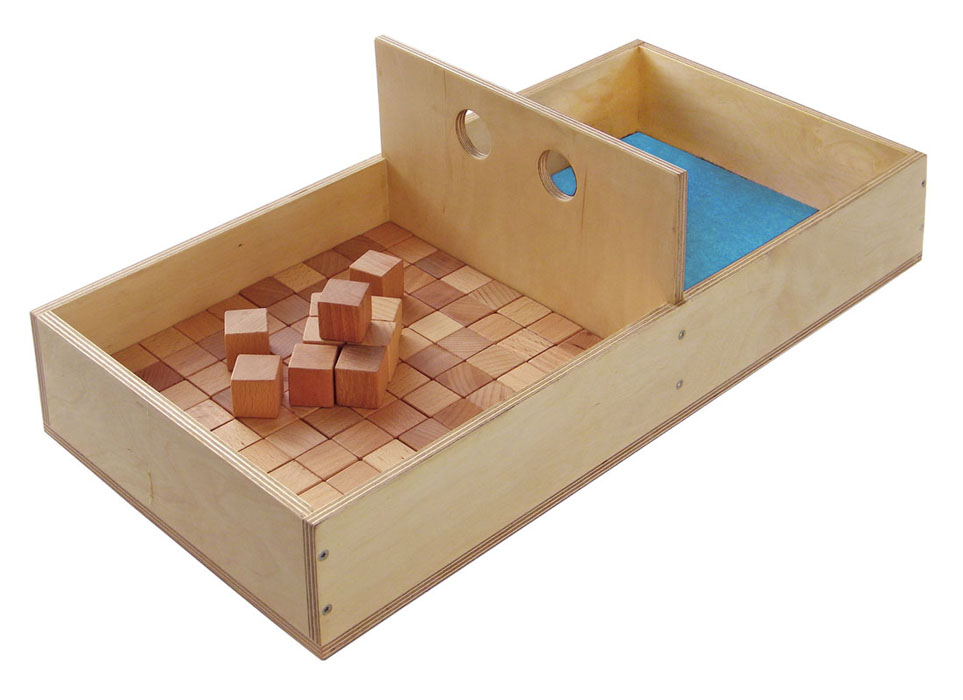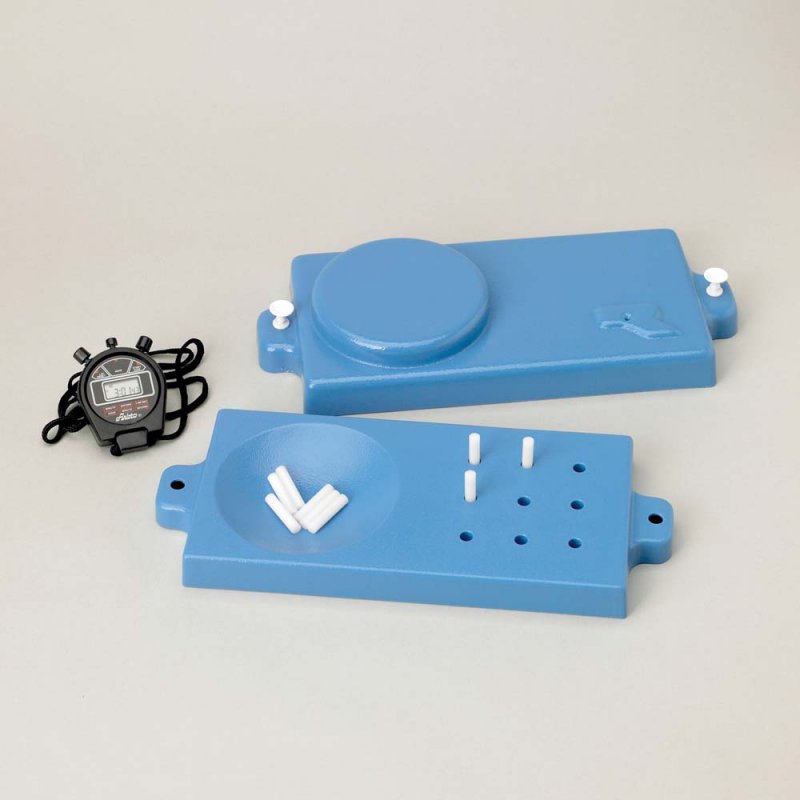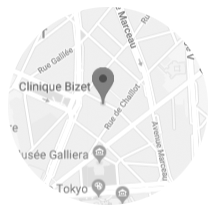Not all patients require treatment. It is necessary to treat when spasticity induces deformities or functional impairment.
The care of spastic patients is best organized as a team work around the patient and family, including all the professionals involved in the treatment: family doctor or pediatrician, neurologist, physiatrist, physiotherapist and occupational therapist, and surgeon…
This is usually a long term treatment and participation of the patient and his family is paramount.
Regular evaluations are performed, in order to assess the status of the upper imb, and the short and long term benefit of any treatment, They involve clinical evaluation of spasticity, muscle strength, joint stiffness (muscle / joint contracture), and sensation.
A number of tests exist in order to evaluate the function of the hand, for example:
| the box and blockTest de dextérité manuelle standardisé et chronométré consistant à transférer le maximum de cubes de bois d’un côté à l’autre d’une boîte en bois et un temps donné. test | the nine hole peg Test de dextérité manuelle fine, standardisé et chronométré, consistant à prendre des petits cylindres de bois et à les insérer dans les orifices correspondants sur une tablette.test |
 |
 |
Also a number of assessments, scales and classifications are used, some of which have been specifically designed for the spastic upper limb. (AHA, Melbourne, SHUUE…)
The HOUSE classification is a simple and effective way to describe the gross function of the hand:
|
Grade |
Designation |
Activity level |
|
0 |
Does not use |
Does not use |
|
1 |
Poor passive assist |
Uses as stabilizing weight only |
|
2 |
Fair passive assist |
Can hold on to object placed in hand |
|
3 |
Good passive assist |
Can hold on to object and stabilize it for use by the other hand |
|
4 |
Poor active assist |
Can actively grasp object and hold it weakly |
|
5 |
Fair active assist |
Can actively grasp object and stabilize it well |
|
6 |
Good active assist |
Can actively grasp object and then manipulate it against other hand |
|
7 |
Spontaneous use, partial |
Can perform bimanual activities easily and occasionally uses the hand spontaneously |
|
8 |
Spontaneous use, complete |
Uses hand completely independently without reference to the other hand |






